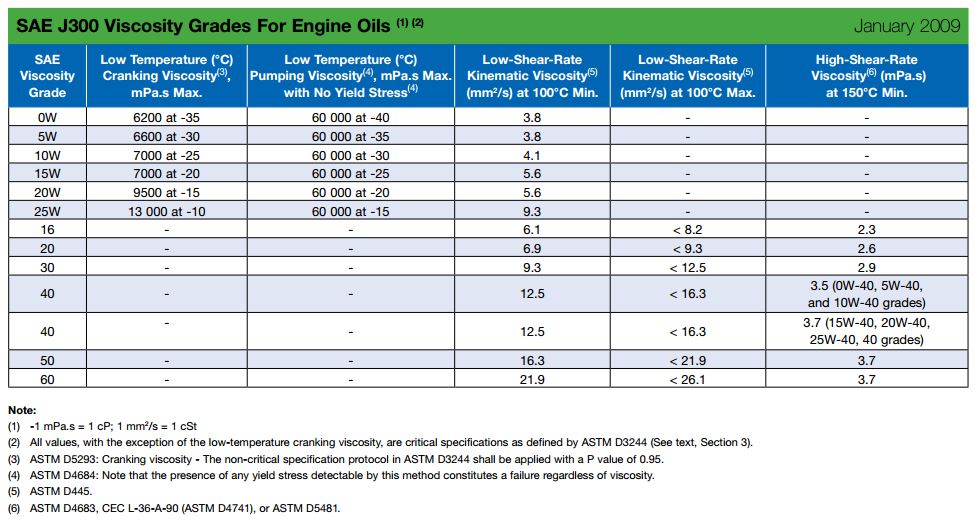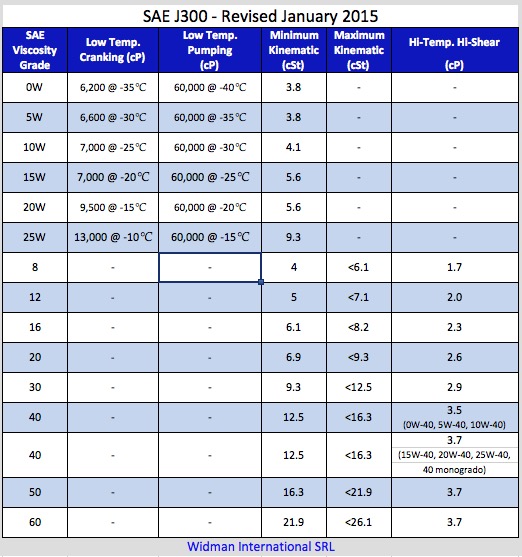OVERKILL
$100 Site Donor 2021
Originally Posted By: billt460
Originally Posted By: Shannow
And no, 0w16 is only the last couple of years.
Wrong. The stuff has been around for the last 20 years... Period. And all of your double talk and B.S. doesn't change that. It's not "new" or "sudden". Anymore than it will cause your engine to wear prematurely because it's too thin.
This is SAE J300 from 2009:

This is the 2015 version (thanks to member Widman):

And to provide a quote:
Quote:
On April 1, 2013 the Society of Automotive Engineers (SAE) introduced a new viscosity grade called SAE 16. This is a new high temperature viscosity grade hence it's not 16W just simply 16 or SAE 16. This is the lowest high temerature SAE engine oil viscosity grade yet, replacing SAE 20 in this role. The introduction of this viscosity grade is another step towards motor oils providing better and better fuel economy and such oils will most likely to be first recommended by companies that emphasize fuel economy oils (e.g. Ford, Honda).
When the first SAE 16 oils will appear (likely as 0W16 and 5W16 oils) they will only be suitable to be used in vehicles where the engine is designed to operate with such a low viscosity oil. Just as 5W20 and 0W20 oils these oils will also be unsuitable to be used in older engine designs since it would not provide sufficient wear protection on operating temperature.
So the SAE 16 grade has been around for 5 years as of April 1st.
The problem appears to be that you don't want to hear what Shannow's saying but rather what you THINK he's saying, because that allows you to perpetuate this perceived quarrel you have been engaged in with him. That doesn't change the fact that, when this thread is viewed from an outside perspective, that he's provided some valuable information. Could he be less crass? Perhaps, but then that would require the same from you. He's responding in-kind from what I can see

Originally Posted By: Shannow
And no, 0w16 is only the last couple of years.
Wrong. The stuff has been around for the last 20 years... Period. And all of your double talk and B.S. doesn't change that. It's not "new" or "sudden". Anymore than it will cause your engine to wear prematurely because it's too thin.
This is SAE J300 from 2009:

This is the 2015 version (thanks to member Widman):

And to provide a quote:
Quote:
On April 1, 2013 the Society of Automotive Engineers (SAE) introduced a new viscosity grade called SAE 16. This is a new high temperature viscosity grade hence it's not 16W just simply 16 or SAE 16. This is the lowest high temerature SAE engine oil viscosity grade yet, replacing SAE 20 in this role. The introduction of this viscosity grade is another step towards motor oils providing better and better fuel economy and such oils will most likely to be first recommended by companies that emphasize fuel economy oils (e.g. Ford, Honda).
When the first SAE 16 oils will appear (likely as 0W16 and 5W16 oils) they will only be suitable to be used in vehicles where the engine is designed to operate with such a low viscosity oil. Just as 5W20 and 0W20 oils these oils will also be unsuitable to be used in older engine designs since it would not provide sufficient wear protection on operating temperature.
So the SAE 16 grade has been around for 5 years as of April 1st.
The problem appears to be that you don't want to hear what Shannow's saying but rather what you THINK he's saying, because that allows you to perpetuate this perceived quarrel you have been engaged in with him. That doesn't change the fact that, when this thread is viewed from an outside perspective, that he's provided some valuable information. Could he be less crass? Perhaps, but then that would require the same from you. He's responding in-kind from what I can see







